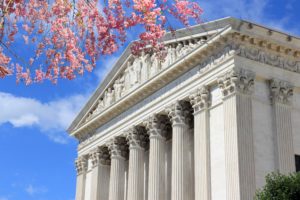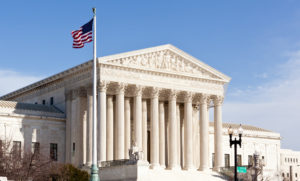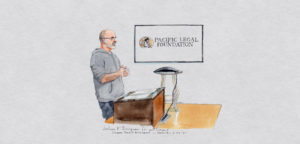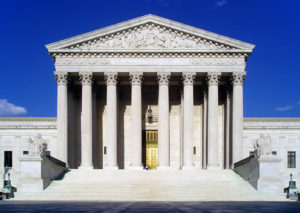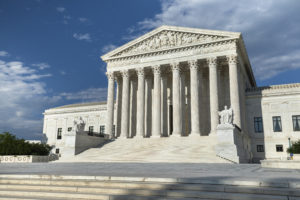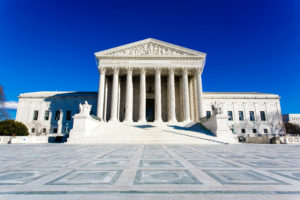CNN: What packing the Supreme Court would really do

US Supreme Court Justice Stephen Breyer recently offered some advice to the proponents of court packing: think long and hard about the consequences.
The octogenarian justice, who finds himself the latest target of a pressure campaign to retire, warned while speaking at Harvard Law School that “[s]tructural alteration motivated by the perception of political influence can only feed that perception, further eroding that trust.”
Breyer is right. Any silver-bullet solution that purports to fix the perception of a politicized court will likely miss the mark and worsen the problem. Nevertheless, President Joe Biden has tasked a commission to examine a variety of court reforms, including appointment procedures, judicial tenure and the number of active justices on the Supreme Court.
And a small group of congressional Democrats, impatient with the 180-day commission study, introduced a bill last Thursday to expand the Supreme Court from nine to 13 seats — although some commenters see that as more of an effort to pressure current justices to issue rulings those politicians like than as realistic legislation.
Before discussing any structural alteration further, however, it’s important to consider whether there is, in fact, a crisis (or anything close) concerning the Supreme Court’s legitimacy resulting from a public perception that the justices are just politicians in robes. The Supreme Court, in reality, tends to have a higher approval rating than the other branches of government, and a Gallup poll last summer showed the court’s highest rating in more than a decade.
The courts, Alexander Hamilton wrote in Federalist No. 78, “can take no active resolution whatever. [They] may truly be said to have neither FORCE nor WILL, but merely judgment.”
Thus, the Supreme Court relies on others to enforce its rulings. And with rare exception throughout our nation’s history, the American people and the other branches of government have respected them. When the justices speak, people listen.
If the Supreme Court is simply a group of “junior league politicians” (to steal a phrase from Justice Breyer), then why isn’t Donald Trump still president? Weren’t we told that his hand-picked justices –including newcomer Amy Coney Barrett — would help deliver Trump a second term? Why isn’t every case decided along “party” lines? And why are there numerous disagreements among the self-described originalists (who interpret the Constitution and laws according to their original public meaning) appointed by Republican presidents?
The Supreme Court is not supposed to be a political institution. America’s framing generation knew well that judges’ independence from politics was essential for our system of government, based on a written Constitution, to work.
That is why federal judges enjoy life tenure — so they would not be tempted to rule with an eye toward their reelection or reappointment. And, as the Constitution explains, they may only decide live judicial cases or controversies — so courts cannot act like a roving council of revision over our nation’s laws.
Some judges do mistake their limited role in our constitutional system, focusing on the outcome rather than the governing text’s actual meaning. Today, however, there are more Supreme Court justices committed to ruling based on the text and original meaning of the Constitution and laws, wherever that may lead, as opposed to other methods of judicial interpretation, than at any other time in recent memory.
Turning to the structure of the Supreme Court, there is nothing magical about the number nine. The number of seats on the court has fluctuated — starting with six and climbing to 10 around the Civil War. It settled at nine members in the late 1860s and then solidified — despite President Franklin Roosevelt’s spectacular political failure at court packing in the 1930s.
But whether we have nine or 19 justices, the reason for any change is as important as the change itself. Court expansion advocates have a heavy burden to explain and justify why they want to add seats and why it should be done now.
Is it to decrease the Supreme Court’s workload?
Some seats Congress added in the 1800s corresponded with creating new circuit courts to serve the expanding country. But in those days, the justices were required to travel to the circuit courts to hear cases alongside district judges — a practice that ended more than a century ago. Few — if any — really believe the workload is why progressives want to pack the court now.
Is it simply a tit-for-tat because Trump appointed three justices?
That’s a recipe for an ever growing court. Recall Sen. Mitch McConnell’s warning years ago not to mess with the filibuster because “the shoe is sometimes on the other foot.” Neither side would likely ever be satisfied.
Is it because court packers dislike the outcome of recent Supreme Court cases?
If that’s so, what outcomes would they expect (or demand) the extra justices deliver? Would they require future nominees to commit to rule in particular ways? That’s almost the opposite of the impartiality and independence we expect from judges.
The late Justice Ruth Bader Ginsburg opposed court expansion for this very reason, saying, “If anything would make the court look partisan, it would be that — one side saying, ‘When we’re in power, we’re going to enlarge the number of judges, so we would have more people who would vote the way we want them to.'”
If there is a perception that the Supreme Court is politicized and illegitimate, the solution is not adding more justices. The solution is to stop asking the justices to twist the Constitution and laws to satisfy partisan yearnings. In short, we should ask judges to be judges and politicians to stop politicizing the courts.
This op-ed was originally published by CNN on April 19, 2021.
For more discussion on court packing, hear the inaugural bonus episode of Dissed, a podcast about the Supreme Court.



